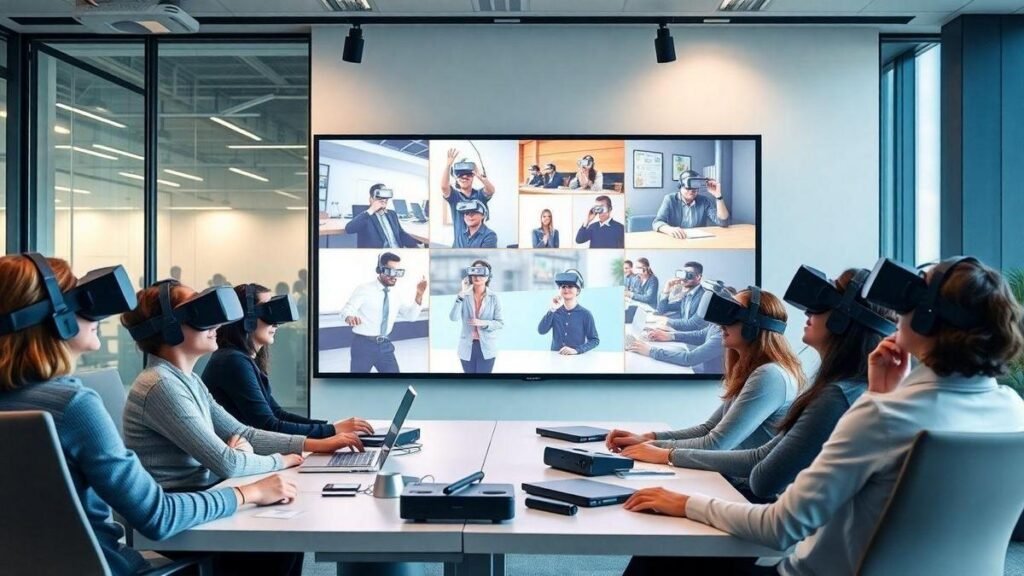
Experiências imersivas em realidade virtual para treinamento corporativo em ambientes remotos are changing the game for companies everywhere. Imagine a world where your team learns in a fun, engaging way. With VR training, employees not only practice their skills but also build stronger relationships. This article explores how virtual reality can improve learning, cut costs, and enhance teamwork. Get ready to discover the exciting future of team training!
Main Points to Remember
- You can boost team skills with virtual reality training.
- VR training makes learning fun and engaging.
- Your team can practice realistic scenarios safely.
- Everyone learns at their own pace in VR.
- Virtual reality can save money on training costs.
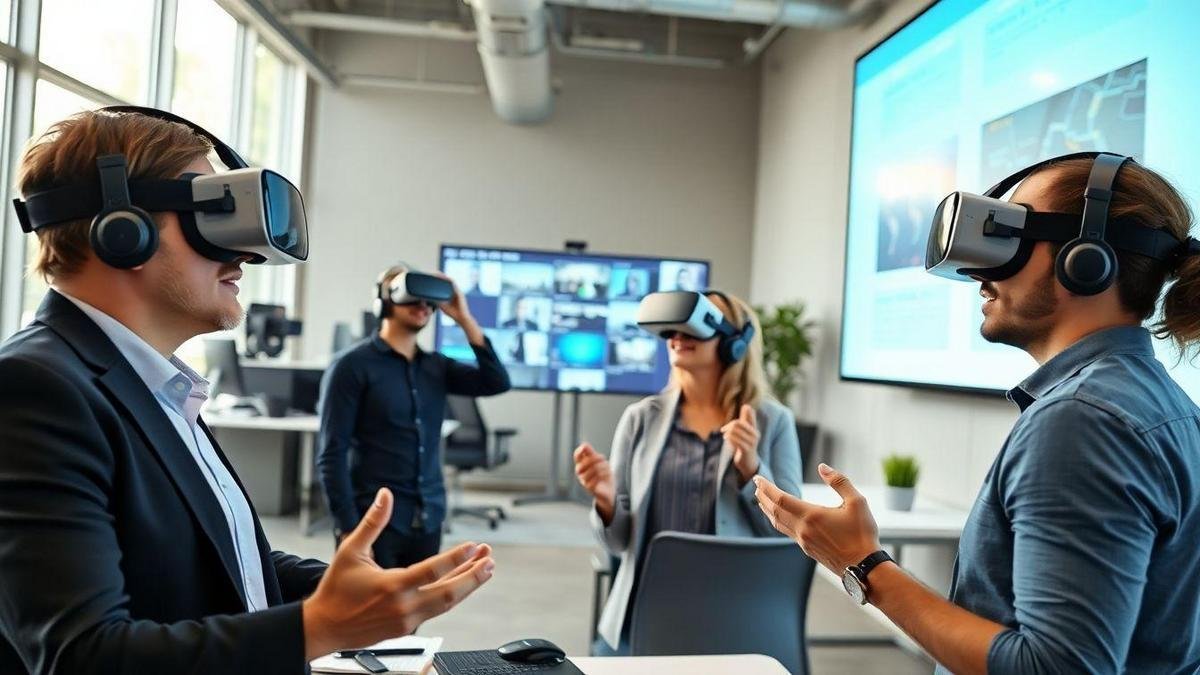
The Power of Experiências Imersivas em Realidade Virtual para Treinamento Corporativo
How VR Training Enhances Learning Retention
Have you ever struggled to remember what you learned in a training session? You’re not alone! Studies show that using virtual reality (VR) can help you remember things better. VR training lets you dive into a realistic environment where you can practice skills hands-on. This kind of learning sticks with you far longer than just reading a manual or watching a video.
When you engage with VR, you’re not just sitting back and watching; you’re actively participating. This involvement makes your brain work harder, helping you to retain information. Imagine practicing a difficult task in a safe space where you can make mistakes and learn from them. It’s like having a personal coach guiding you every step of the way!
Benefits of Immersive Learning Environments
So, why should your company consider VR training? Here are some key benefits that might convince you:
- Enhanced Engagement: Employees are more likely to pay attention and stay focused during VR training.
- Safe Learning Space: Mistakes in VR don’t have real-world consequences, allowing for better learning.
- Customizable Experiences: VR can be tailored to fit your company’s specific needs and training goals.
- Cost-Effective: Over time, VR can save money by reducing the need for physical materials and travel.
| Benefit | Explanation |
|---|---|
| Enhanced Engagement | Keeps employees interested and focused. |
| Safe Learning Space | Allows for mistakes without real-world risks. |
| Customizable Experiences | Tailors training to meet specific goals. |
| Cost-Effective | Saves money on materials and travel in the long run. |
Engaging Employees Through Interactive VR Training
Let’s face it, traditional training can sometimes feel dull. But with interactive VR training, things get exciting! Picture this: You’re in a virtual world, solving problems, and working with your team in real-time. This interaction helps build teamwork and collaboration.
Moreover, VR training can mimic real-life challenges that your employees might face. For example, if you work in healthcare, VR can simulate patient interactions, allowing you to practice your skills in a low-pressure environment before facing real patients.
In short, VR training is a game-changer. It not only makes learning fun but also prepares you for real-world challenges. You’ll walk away feeling confident and ready to tackle your job!
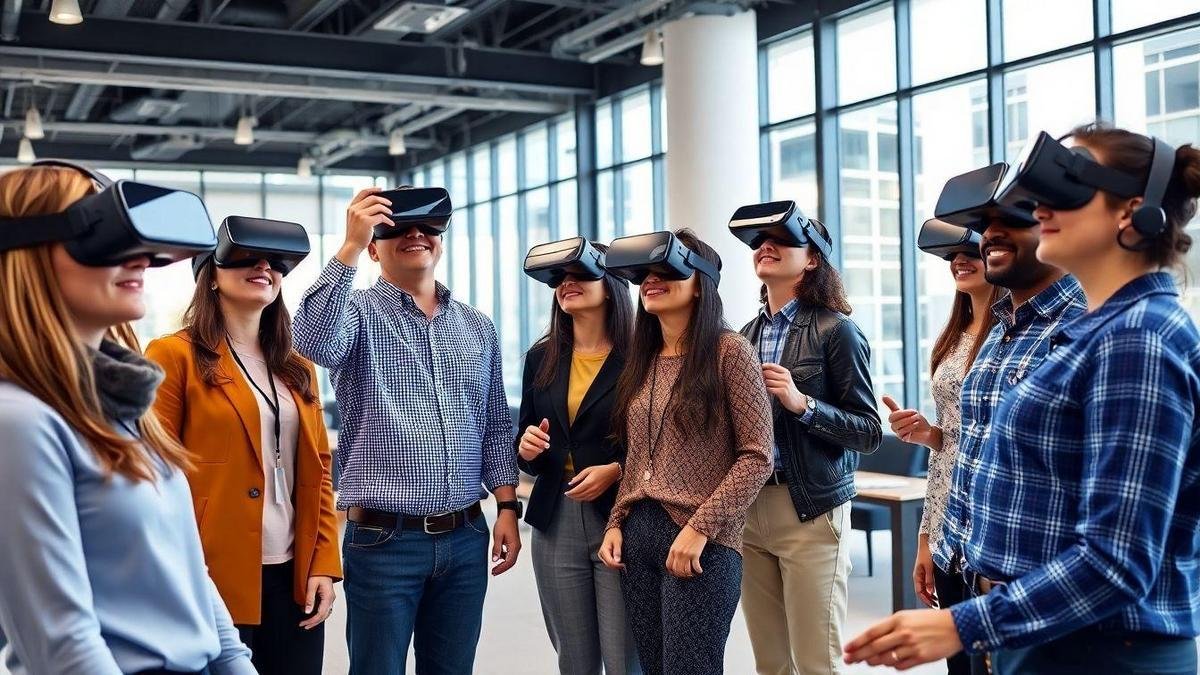
Boosting Team Collaboration with VR Training
How VR Fosters Teamwork and Communication
Have you ever thought about how Virtual Reality (VR) can change the way your team works together? VR creates a space where everyone can meet and collaborate, no matter where they are. This technology allows you to step into a shared environment where you can engage, brainstorm, and solve problems as if you were in the same room.
Imagine this: you put on a VR headset, and suddenly, you’re in a virtual conference room with your colleagues. You can see their avatars, interact with them, and share ideas. This immersive experience helps break down barriers and encourages open communication. It’s like having a team huddle without the need for everyone to be physically present.
Real-Life Examples of Collaborative VR Training Programs
Here are some real-life examples that show how companies are using VR to boost teamwork:
| Company | VR Program Description | Outcome |
|---|---|---|
| Walmart | Uses VR for employee training in customer service. | Improved employee confidence and skills. |
| Boeing | Conducts VR training for assembly line workers. | Reduced training time by 30%. |
| Ford | Utilizes VR for design collaboration among engineers. | Enhanced creativity and faster project completion. |
These examples highlight how VR training can lead to better teamwork and communication. Each company saw real results by investing in this technology.
Improving Team Dynamics with Virtual Team-Building Experiences
Team-building is crucial for creating a strong work environment. With VR, you can have fun while building relationships. Think of activities like virtual escape rooms or collaborative challenges. These experiences allow you and your team to work together in a fun setting, strengthening your bond.
Imagine solving puzzles together in a virtual world. You’ll have to communicate, strategize, and rely on each other to succeed. This type of interaction helps improve team dynamics and builds trust among team members.
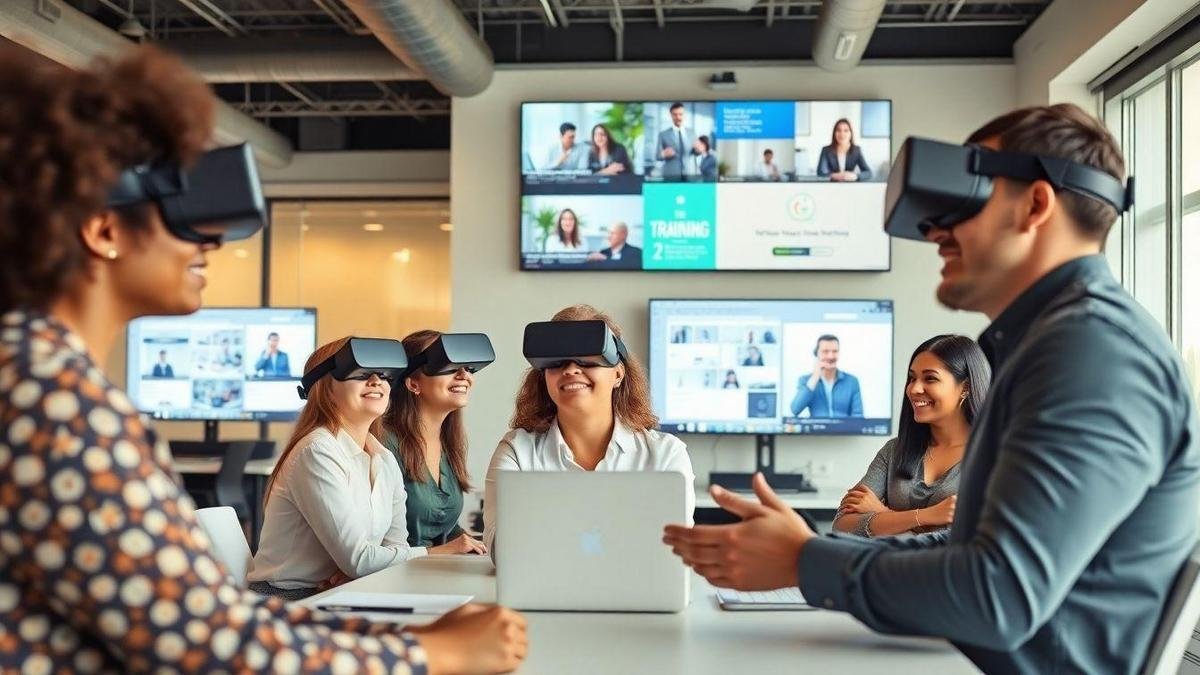
Cost-Effectiveness of Virtual Training Simulations
Reducing Training Costs with VR Solutions
When you think about training your team, costs can really add up. Virtual Reality (VR) solutions can help you cut those costs. Instead of spending money on travel, venues, and materials, VR allows you to create a realistic training environment right from your office or home. Imagine training your employees without the need for expensive setups!
With VR, you can reduce expenses significantly. No more renting spaces or flying people in for workshops. You can have everyone train together, no matter where they are. This not only saves money but also time.
Long-Term Savings from Immersive Training Programs
Investing in immersive training programs pays off in the long run. When your team learns effectively, they make fewer mistakes. Fewer mistakes mean less money spent on correcting errors. Plus, VR training often leads to better retention of information. Your employees won’t just learn; they’ll remember what they’ve learned.
Here’s a quick breakdown of potential long-term savings:
| Expense | Traditional Training | VR Training |
|---|---|---|
| Travel Costs | $2,000 | $0 |
| Venue Rental | $1,500 | $0 |
| Materials & Supplies | $500 | $100 |
| Total Estimated Cost | $4,000 | $100 |
As you can see, the savings can be huge!
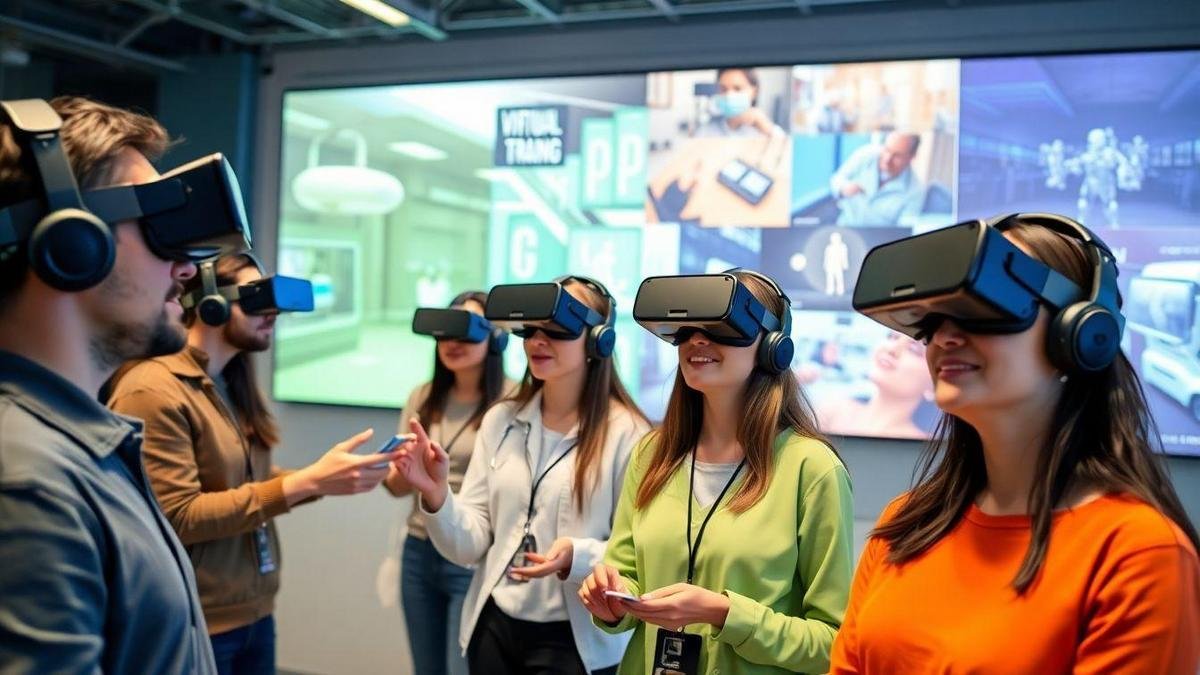
Enhancing Skills Development Through VR Experiences
The Role of VR in Skill Acquisition and Practice
Virtual Reality (VR) is changing how you learn new skills. Imagine stepping into a world where you can practice without any real-world consequences. This immersive experience allows you to make mistakes and learn from them, all while feeling like you’re actually there. Whether you’re training for a job or picking up a new hobby, VR gives you a safe space to grow.
Think about how athletes train. They visualize their moves, but with VR, you can actually perform those moves in a simulated environment. This kind of practice can help you grasp complex skills much faster. For instance, a surgeon can practice a procedure multiple times in VR before ever touching a real patient. This hands-on approach helps build confidence and competence.
Measuring Skill Improvement with Virtual Reality Training
So, how do you know if VR training is making a difference? Well, it’s all about tracking progress. Many VR training programs come with built-in analytics that show you how you’re improving. You can see things like:
| Skill | Before VR Training | After VR Training |
|---|---|---|
| Reaction Time | 1.5 seconds | 1.0 seconds |
| Accuracy | 70% | 90% |
| Confidence Level | 5/10 | 8/10 |
These numbers tell a story. They show you how much better you’re getting with each session. You can adjust your training based on what the data reveals. If you’re struggling in one area, you can focus on that until you see improvement.
Adapting VR Training for Different Skill Levels
Not everyone starts at the same point. Some of you might be beginners, while others are seasoned pros. That’s where tailored VR training comes in. The best VR programs adapt to your skill level.
- Beginners can start with simple tasks and gradually move to more complex challenges.
- Intermediate users can tackle scenarios that require a bit more finesse.
- Advanced users can jump right into high-pressure situations that test their skills.
This adaptability helps everyone grow at their own pace. You won’t feel overwhelmed, and you’ll be motivated to keep pushing your limits.
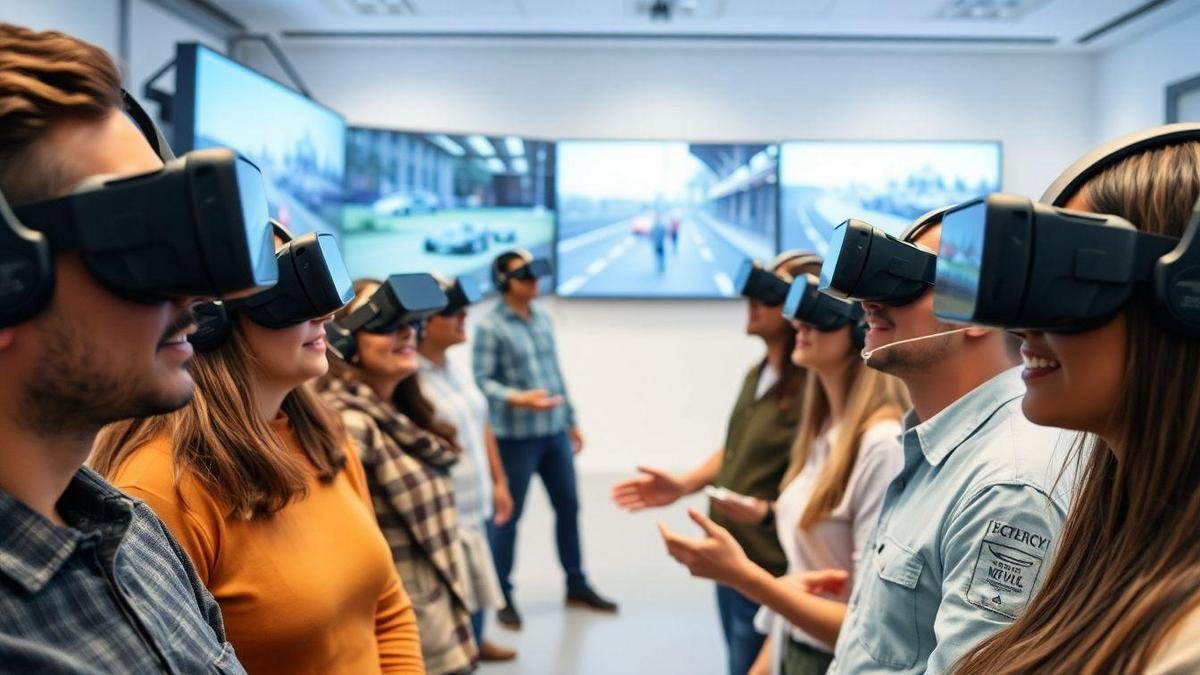
The Future of Training: Trends in VR Technology
Emerging Technologies in VR Training for Teams
When you think about training, what comes to mind? Boring lectures? Endless PowerPoint slides? Well, welcome to the future! Virtual Reality (VR) is shaking things up. Imagine putting on a headset and stepping into a whole new world where you can learn by doing. This isn’t just a dream; it’s happening right now!
Here are some emerging technologies in VR training that are making waves:
- Real-time Feedback: Imagine getting instant tips while you practice. This can help you improve faster!
- Collaborative Spaces: You and your team can train together, no matter where you are. It’s like being in the same room!
- Gamification: Learning becomes a game! You earn points and badges, making training fun and engaging.
Predictions for the Evolution of Immersive Training
So, where is this all headed? Let’s take a peek into the crystal ball. Here’s what experts are saying about the future of immersive training:
- More Personalization: Training will be tailored to fit your needs. The days of one-size-fits-all training are numbered!
- AI Integration: Artificial Intelligence will help create smarter training programs. It’ll adapt to your pace and style.
- Wider Adoption: More companies will embrace VR training. It’s cost-effective and has proven results.
Staying Ahead with Innovative VR Training Solutions
To keep up with these trends, you need to stay ahead of the game. Here are some innovative VR training solutions you might want to consider:
| Solution | Benefits |
|---|---|
| VR Simulations | Practice real-life scenarios without the risks. |
| Remote Training | Train from anywhere, no travel needed. |
| Progress Tracking | Monitor your growth and areas for improvement. |
By embracing these tools, you can elevate your training experience and engage more effectively. With experiências imersivas em realidade virtual para treinamento corporativo em ambientes remotos, you’ll be well-prepared for whatever comes next!
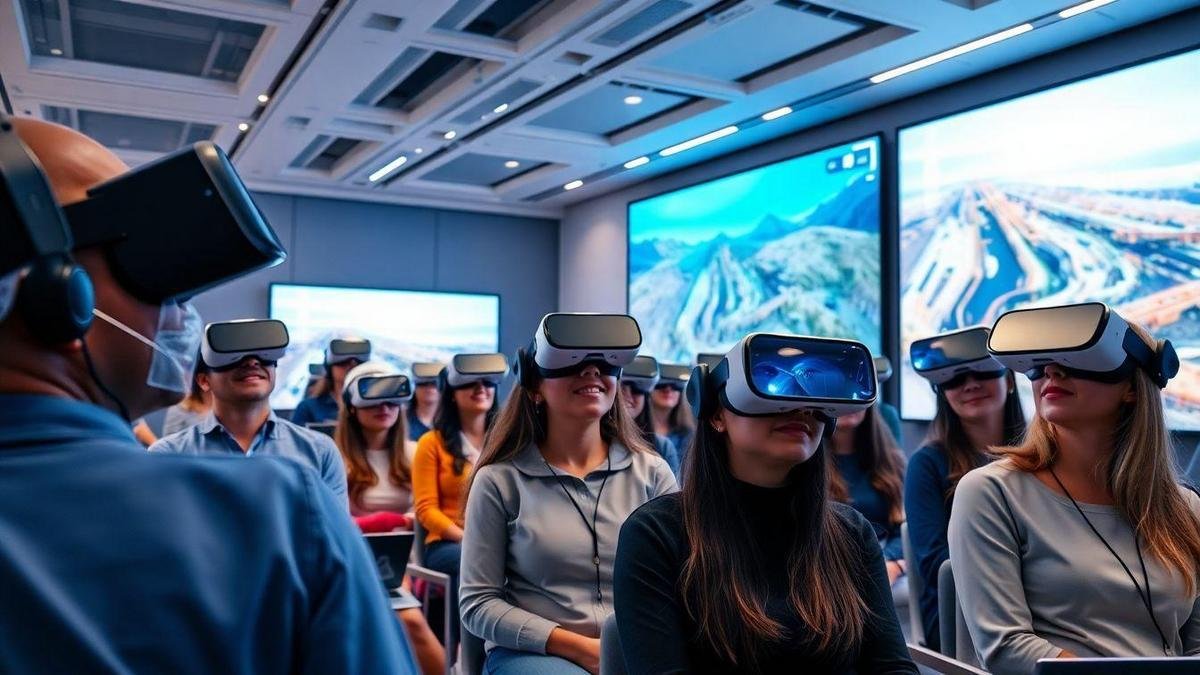
Overcoming Challenges in Remote Training with VR
Addressing Common Obstacles in Virtual Training
When diving into remote training with VR, you might hit a few bumps along the way. It’s like trying to ride a bike for the first time—you may wobble, but you’ll eventually find your balance. Here are some common challenges you might face:
- Technical Issues: Sometimes, the tech can be tricky. Internet problems or software glitches can throw a wrench in your plans.
- User Engagement: Keeping everyone interested can feel like pulling teeth. If learners aren’t engaged, they won’t get the most out of the experience.
- Learning Curve: Not everyone is tech-savvy. Some might struggle to adapt to VR tools and environments.
Strategies for Successful Remote VR Training Implementation
Now that you know the hurdles, let’s talk about how to leap over them. Here are some strategies to make your VR training a hit:
- Test the Tech: Before your training session, run a few tests. Make sure everything works smoothly. This way, you can avoid surprises.
- Interactive Content: Use engaging and interactive materials. Think quizzes, discussions, or even group activities. This keeps everyone on their toes.
- Provide Support: Offer help for those who may feel lost. Create a quick guide or a video tutorial to assist them in navigating the VR space.
| Strategy | Description |
|---|---|
| Test the Tech | Run tests to ensure everything works smoothly. |
| Interactive Content | Use quizzes and discussions to keep learners engaged. |
| Provide Support | Offer guides or tutorials for those who need help. |
Ensuring Accessibility in Experiências Imersivas em Realidade Virtual
One of the most important things to consider is accessibility. You want everyone to join in on the fun, right? Here are some tips to make your VR training accessible:
- User-Friendly Design: Make sure the VR platform is easy to navigate. A simple layout helps everyone feel comfortable.
- Adjustable Settings: Allow users to change settings like text size or audio levels. This can make a big difference for those with special needs.
- Diverse Content: Use a variety of training materials. Different formats, like videos or simulations, can cater to different learning styles.
Conclusion
In conclusion, immersive virtual reality training is not just a trend; it’s a revolution in how teams learn and collaborate. By engaging with VR, you boost your skills, enhance teamwork, and cut down on training costs—all while having a blast! Imagine stepping into a world where you can practice without fear of failure, where every mistake is a stepping stone to success.
As you navigate this exciting landscape, remember that adaptability is key. With VR, you can tailor your training experience to meet your unique needs, ensuring that everyone in your team grows at their own pace. So, why not take the plunge? Dive into the world of VR training and watch your team soar to new heights!
Curious for more insights? Check out Meqviral for additional articles that will keep you ahead of the curve!
Frequently Asked Questions
What is immersive virtual reality training for teams?
Immersive virtual reality training for teams lets you step into a 3D world. You can learn new skills and practice in a safe space. It’s like a video game that teaches you real-life tasks.
How does it help teams work better together?
It brings your team together, even if you’re far apart. You can solve problems together and build trust. This strengthens team bonding and improves communication.
Can I use immersive training in remote work?
Absolutely! These experiências imersivas em realidade virtual para treinamento corporativo em ambientes remotos work perfectly for remote teams. You can log in from anywhere and join training.
What skills can be learned using this kind of training?
You can learn a variety of skills! From safety training to teamwork exercises, the options are endless. It prepares you for real-life challenges in a fun way.
Is it safe to use virtual reality for training?
Yes, it’s very safe! You can practice without risks. It’s like rehearsing before the real performance. You learn and grow without any danger to you or your team.